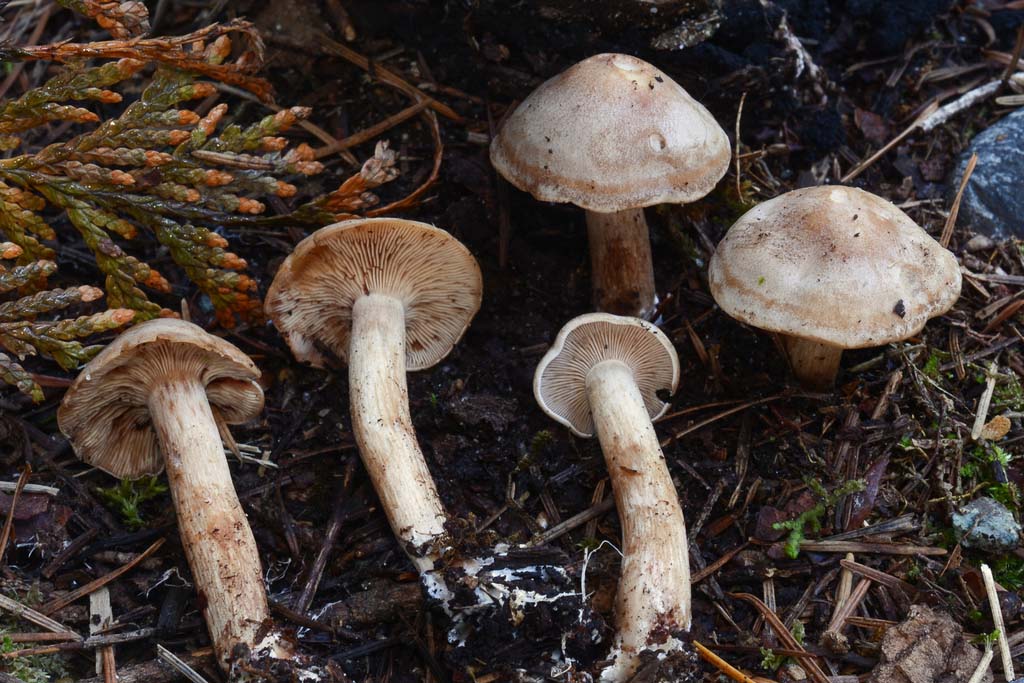
© Connor Dooley
Danny’s DNA Discoveries – Hertzogia of the PNW
by Danny Miller
|
|
Danny’s DNA Discoveries – Hertzogia of the PNW
|
|
Introduction
Hertzogia is currently not well supported in any known family, so it may get its own family, Hertzogiaceae, or if it is discovered to be near something else with high support, a different family name. One fascinating collection that looks like a Lactarius candy cap relative turned out to be >13% different in ITS from any known family. abundant common uncommon rare - colour codes match my Pictorial Key and are my opinions and probably reflect my bias of living in W WA. Rare species may be locally common in certain places at certain times. |
Summary of Interesting Results
|
|
Hertzogia A newly erected genus for Hertzogia martiorum, formerly in Clitocybe and Lepista. It has pale pink smooth spores, a somewhat pinkish-orange cap and stem with a hoary white coating and strong farinaceous odor and taste. It may need its own family. The coloured smooth spores help differentiate it, as the Clitocybaceae usually have either white, smooth spores or coloured, warty spores. Species mentioned: Hertzogia martiorum.
Hertzogia martiorum EU - one OR collection has a sequence that matches a handful of EU type area sequences. Hertzogia martiorum © Connor Dooley |
|
Tricholomatineae PNW01 At first glance it looked like a Lactarius candy cap relative, but the sequence is clean and >13% different in ITS from any known family in this suborder, but it seems to be in this suborder. We'll need additional genes.
Tricholomatineae PNW01 Tricholomatineae PNW01 © Yi-Min Wang |